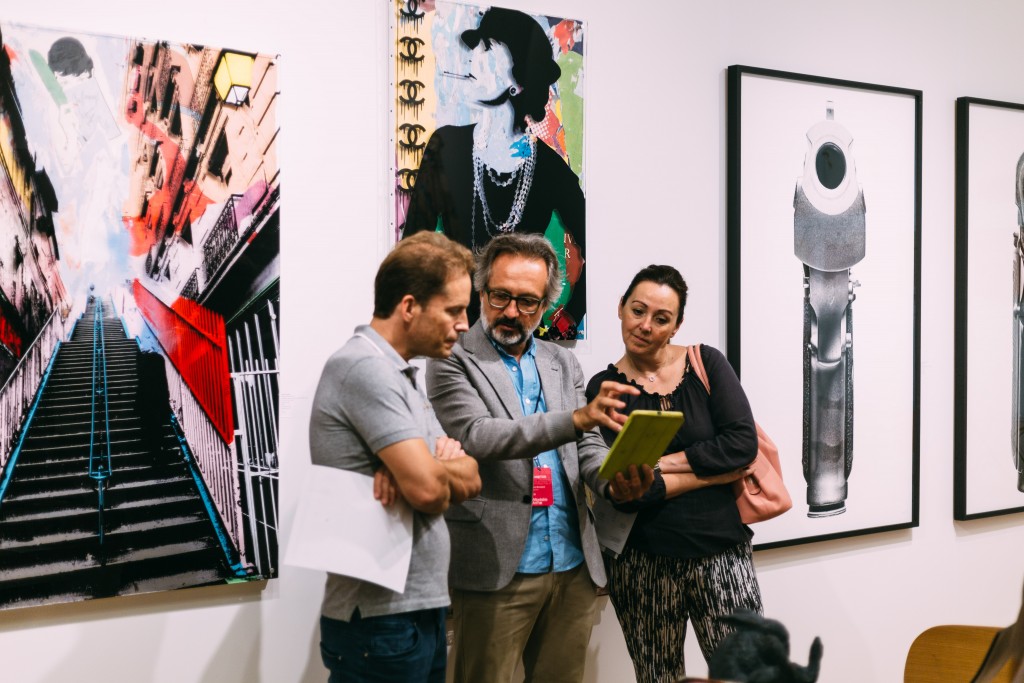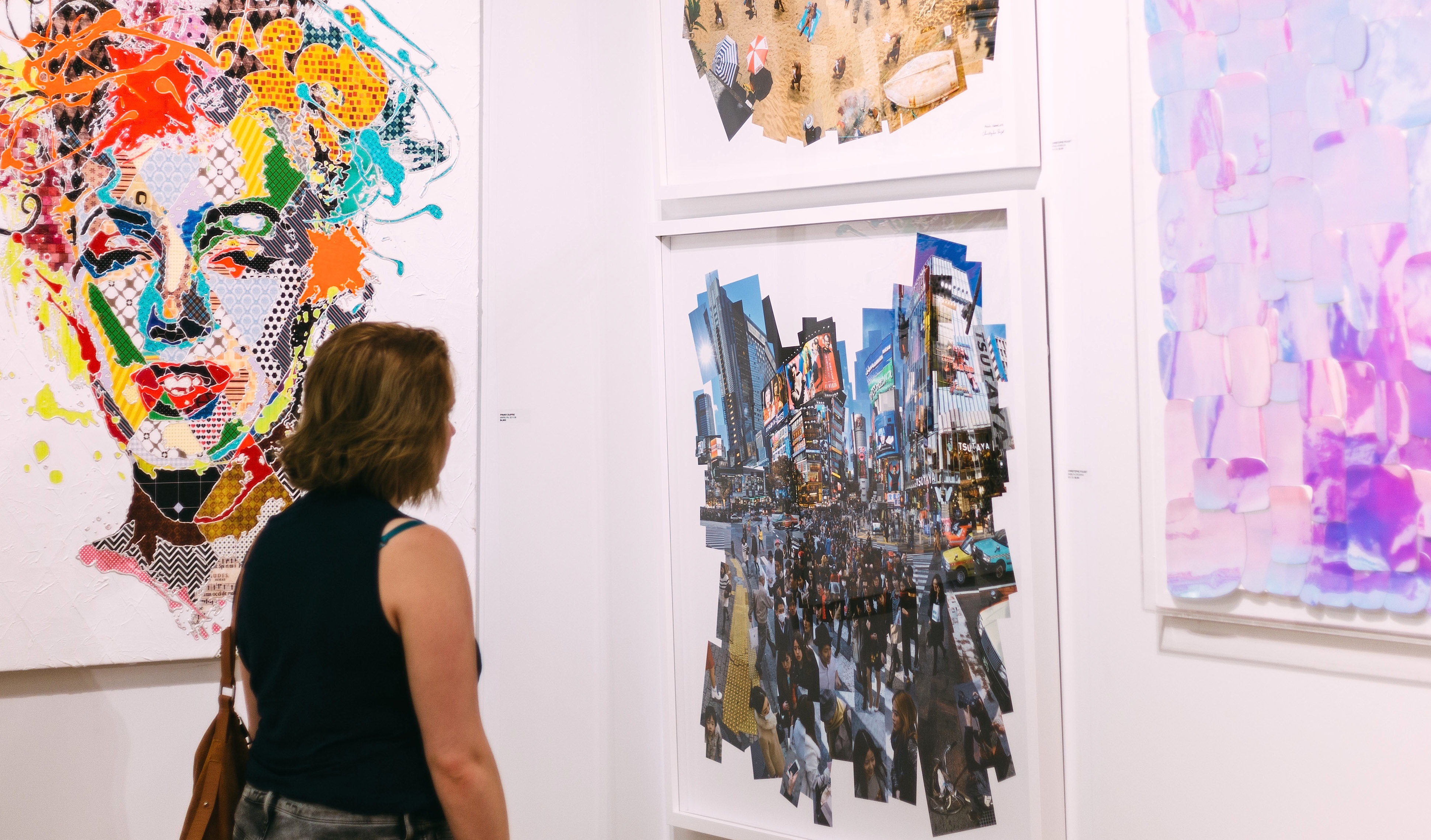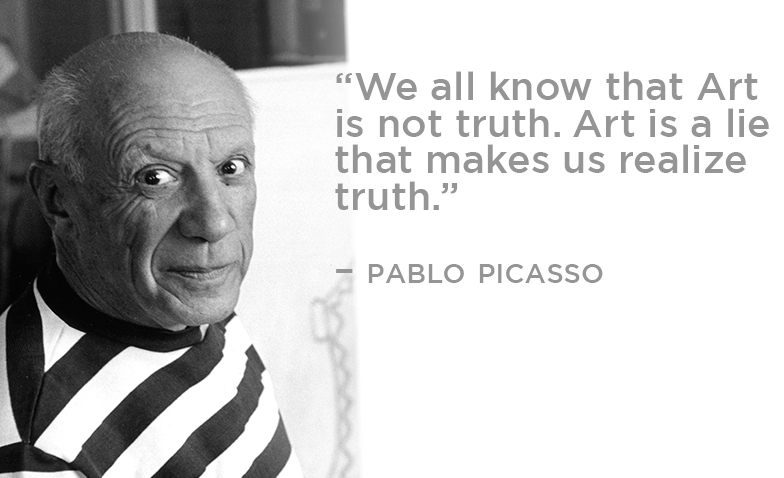
Unless you are involved in the art or design world, the act of visiting an art gallery may seem overwhelming. Frequently, this feeling is based purely on a lack of knowledge of what to see and where to see it. Further, many people give up after one or two experiences because they either “don’t get” the art or feel intimidated by the setting.
Viewing art is one of the most enjoyable, educational, and in many cases, free sources of entertainment that a city has to offer. The hesitation is understandable, so we created a list of things to consider before you plan your next foray into the art world.
7. Don’t go to a gallery on opening night if you really want to engage with the art.

Granted Thursday night gallery openings have free booze and the occasional celebrity sighting, but if you are truly interested in appreciating the art, we strongly suggest going on a weekday. Otherwise you will be tightly packed into a sweaty gallery and be forced to compete with Commes des Garcon scenesters for a peek at the artwork.
6. Do your research ahead of time to see what will be on view.

There are hundreds of galleries in a city and you want to make sure you are interested in what is on view and where. Museums also provide a constantly changing line-up of exhibitions and it’s easy to miss a show you were hoping to see.
5. Do a little background research on the artist, especially if the work is abstract or challenging.

Not all art is pretty, nor should it be. A lot of great art is aesthetically challenging and forces you to ponder the layered meanings behind the work. To ease your mind, look a little into the artist’s bio, past works, and what work will be on view. A few minutes of pre-planning will allow you to engage with the work on a much deeper level. This pertains to galleries, museums, public art installations, and pretty much anywhere you plan on admiring artworks.
4. Map out your plan of action from location and hours to transportation.

Regardless of the city, you should always map out your geographic plan of action before you wander off in search of art. We recommend dropping pins on Google maps or compiling a list in your calendar or note section on your phone. Many galleries and museums also are closed on Mondays or will occasionally be closed for private events or exhibition installment. Transportation can also be a headache so check train schedules or traffic before you head out.
3. Bring a friend with different taste in art than yourself.

Find an art partner a crime and if possible, one that has different taste in art than yourself. This will provide interesting dialogue and possibly change the way you view the work.
2. Take advantage of the materials that are provided to you.

Galleries are FREE. As are the pamphlets and/or brochures that are piled up on the front desks. Also, many museums have free audio tours. Grab one or all of them in order to learn more about the works on view. Often times the medium, process, or backstory of a work is what makes it interesting, so don’t miss an opportunity to learn something new.
1. Don’t be afraid to ask questions.

If you find yourself with questions, don’t hesitate to engage with the museum or gallery staff. It can seem intimidating or embarrassing, but the staff is very knowledgable about the works and are there to help you.
Finally, this may seem obvious but forget one of these crucial details and you may miss be setting yourself up for disappointment: Eat something in advance (no one likes art on an empty stomach), Wear comfortable shoes (Everyone wants to look cool, but we recommend going for comfortable chic), and Bring an open mind (it’s supposed to be fun).
Like this article? Check out our guide on how to appreciate conceptual and abstract art!







